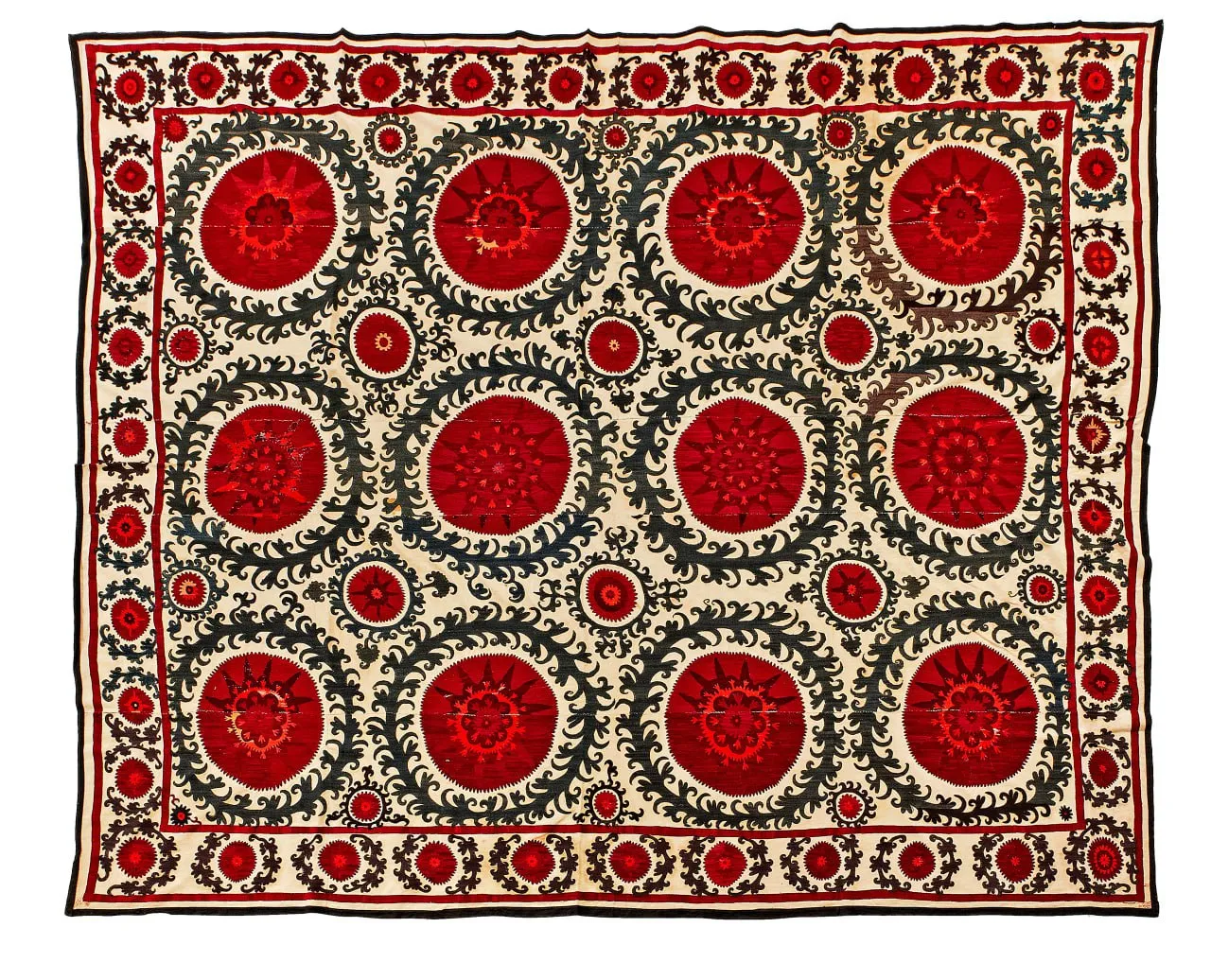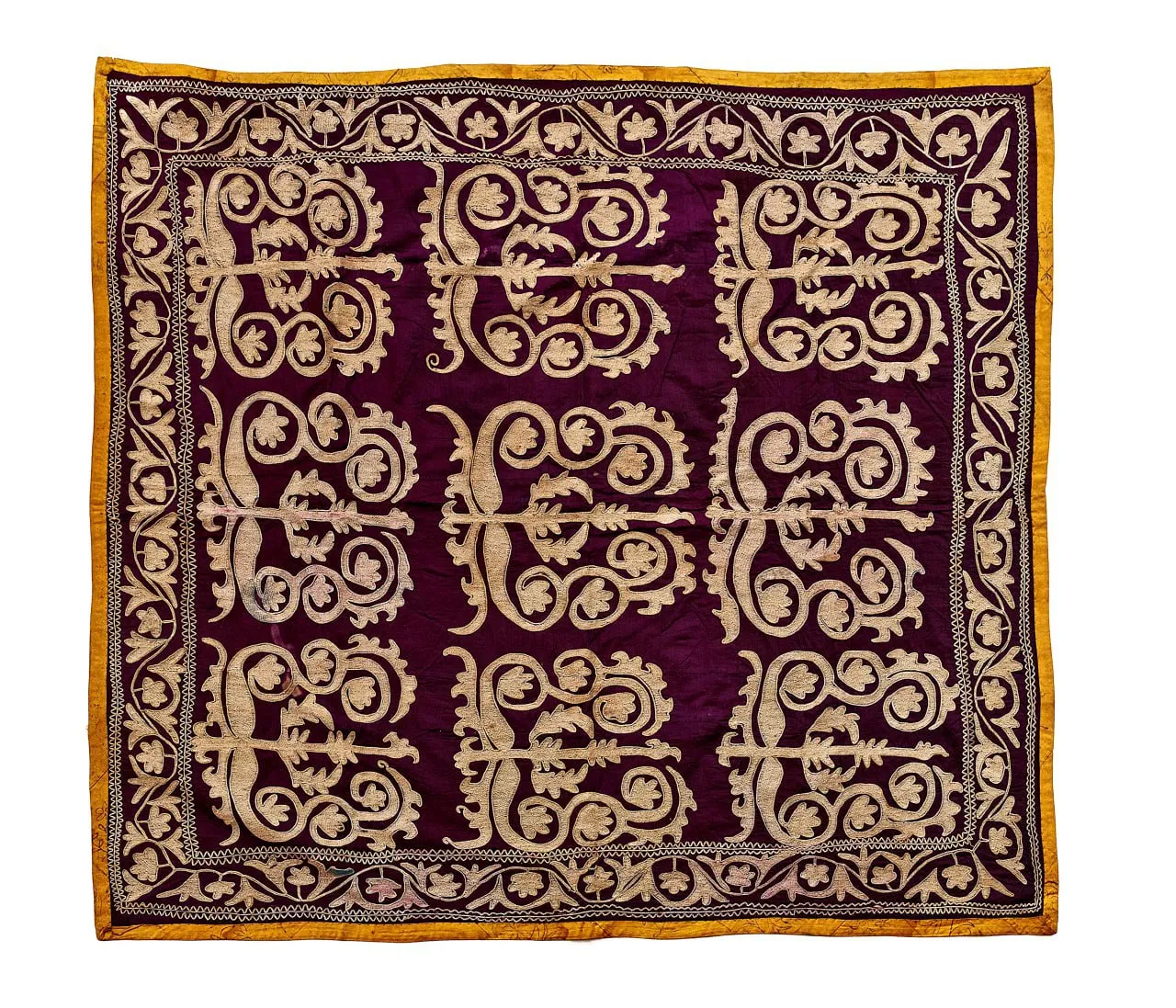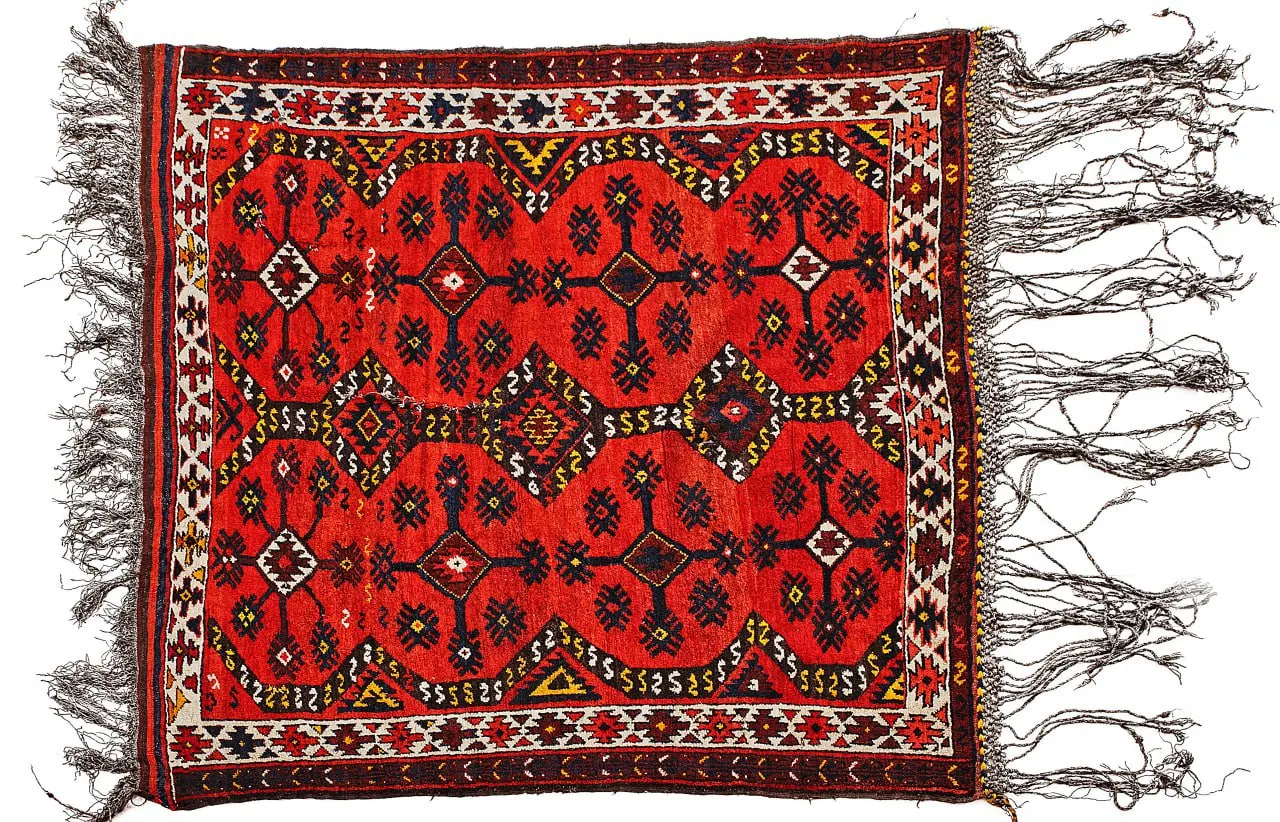On the territory of the late medieval Uzbek khanates and later in Uzbekistan, carpet-making was considered a magical craft, and carpets were regarded as talismans.
Carpets were the permanent attributes of the most significant events in a woman's life – the rites associated with the wedding.
Wedding rituals could vary insignificantly in different ethnic groups, but in general they included matchmaking (sovchilik), engagement (fotikha), approval of marriage according to Sharia in a bride's house (nikoh), moving of the bride to the bridegroom's house, a wedding party (tui), wedding night, the "face opening ritual" on the second day of the wedding (yuz kurar), "bride bowing" – reception of guests at the husband's house (kelin salom), and the first 40 days after the wedding (chilla). All these and other significant events in the life of a young woman took place against the background of fantastic embroideries and carpets created by her hands.
For example, when a young girl left her parents' house, the women from the family carried an unfolded suzani over her head to as far as the threshold of the bridegroom's house as a symbol of the patronage of heaven. In Tashkent, the bride was wrapped in embroidery together with her head, for which a palak – a local analogue of suzani – was used. It was believed that the embroidery symbolizing the sky protected the bride from evil spirits and the evil eye.
The magic of embroidery was also in their patterns. Floral (Bukhara school) or astral (Samarkand school) motifs, numerous amulets – they all bore the ideas of protection from the evil eye, wishes of numerous healthy children, prosperity and a long family life.
Read about other customs and traditions performed by the peoples of Uzbekistan in the book -album Cultural Legacy of Uzbekistan in the Collections of the State Museum of the History of Religion (St. Petersburg).
The general sponsor of the project "Cultural legacy of Uzbekistan in the world collections" is the oilfield services company Eriell Group.



